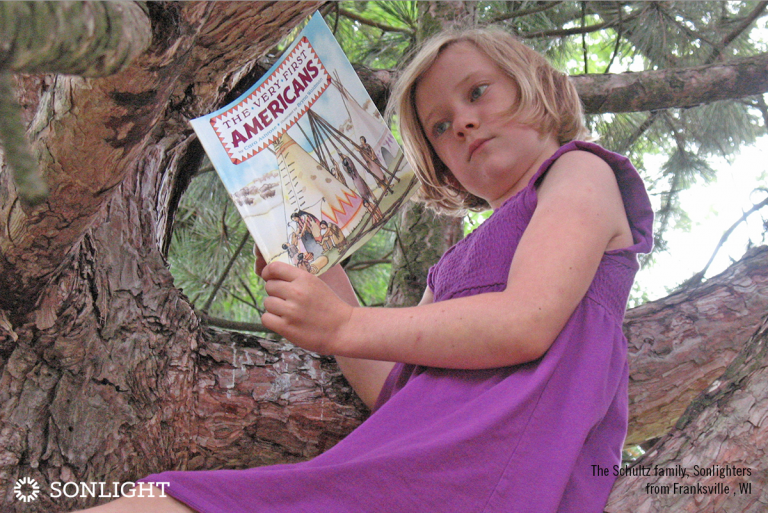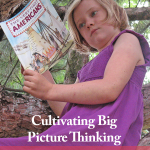
Some forms of education rely heavily on memorization. Think of that old rhyme, “In fourteen hundred ninety-two, Columbus sailed the ocean blue.” Columbus is important to history. If you know the date when he sailed, you have a good reference for one of the major transformations of the world.
But Sonlight wants to do more than simply pour facts into your head. When your children think about Columbus, we want them to have some idea not only about when he sailed, or the names of his three ships, but we want your children to have some idea about how the world changed as a result of his travels—big picture thinking.
Using Your Brain Instead of Just Memorizing Facts
As one of the women on our forums wrote:
Retraining our daughter to use her brain instead of just memorizing facts has been a challenge, but what a happy day when she gave her first tentative opinion about the underlying meaning of something that we were reading. She’s no longer phrasing her thoughts as questions, and that alone has made the curriculum and time investment worth it.
I am thrilled to hear when Sonlighters’ children begin to think for themselves.
This excites me, because, besides experiencing the stories, I want our children—yours and mine—to gain discernment and wisdom. I want them to acquire the ability to place current events—and their lives—in the context of world history, so that they can think clearly.
The Old Testament poetically describes some men from Issachar as, “men who understood the times and knew what Israel should do.” That’s the kind of discernment I dream of for the next generation: the ability to see the big picture and see a way forward.
Knowing What to Look Up and Why for Big Picture Thinking
I find it interesting that, quite apart from the Bible, current scholarship on education confirms the benefit of big picture thinking. Since the Internet remains always available to give you any information you might need—the length of the Mayflower, the 47th element on the Periodic Table, the 14th President of the United States, and so on—memorization today is less critical than it was even a generation ago. Today, you are better served knowing what to look up and why—questions that are answered as a result of a big picture perspective—rather than knowing “the answer.”
As you read to your children and talk about the stories, you will see that your children are thinking. They won’t merely know, but they will have ideas about what is right and wrong, about how to love God and love others, about how to live in this world.
I think of a story Shary in Virginia told a few years ago:
I decided—just for fun—to ask my 10-year-old son a review question at the back of a history book we were reading: “What year did Franklin Roosevelt take office?”
There were three choices for answers: 1933, 1903, 1973.
His response: “Well, let's see. The 1920s were when the US was doing really well and people were making lots of money. Then the stock market crashed and we went into the Depression. So it had to have been 1933 when he took office.”
Do I care that he remembered the exact date? No. Do I care that he knew enough of what was going on that he could figure it out? You bet.
She said she knew why her son was able to figure out the answer. It was because he had been using Sonlight.
Because although our signature product is our combination of History, Bible, Literature, a Sonlight education requires students to think, and that is useful in fields that are not related to History or Literature—subjects like Math, Biology, and Engineering.
If you use Sonlight, your children will be equipped for big picture thinking, whatever they are called to do.
If you are ready to find out more about how to train your children to think, Sonlight has homeschool consultants available to talk to you about the next step on your journey. Go here to schedule a complimentary call.








